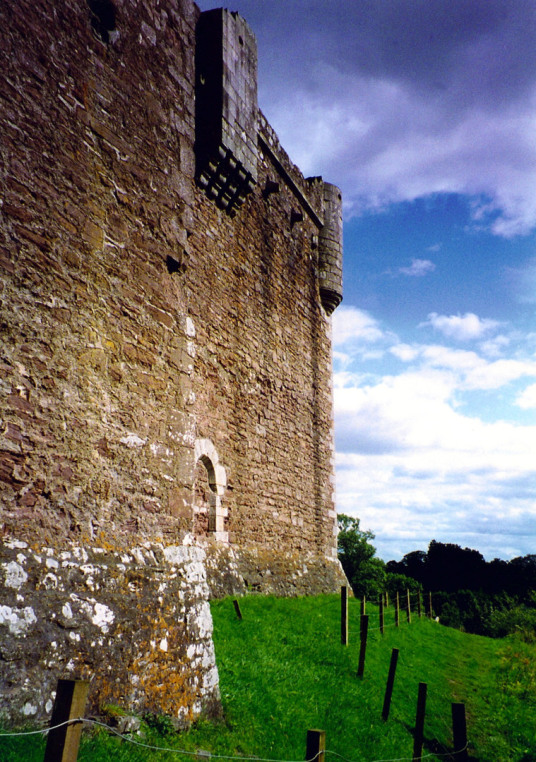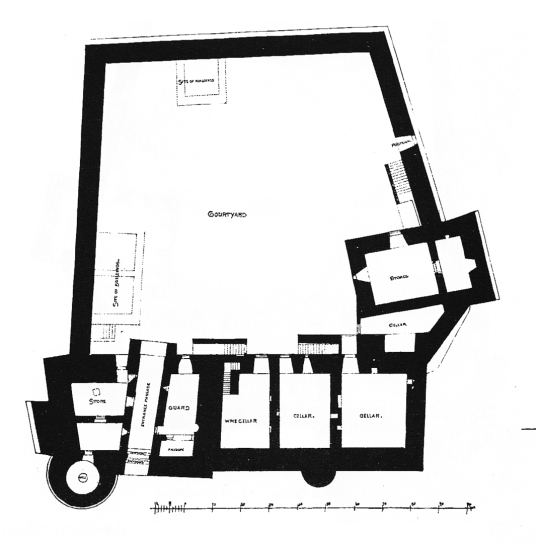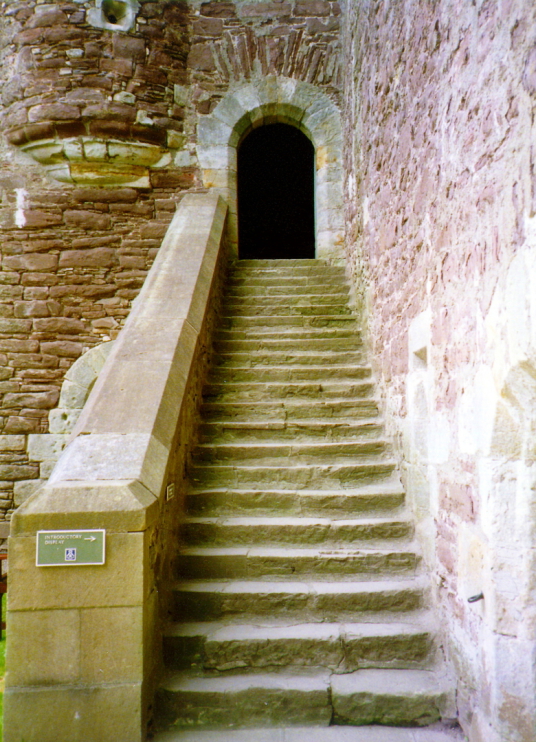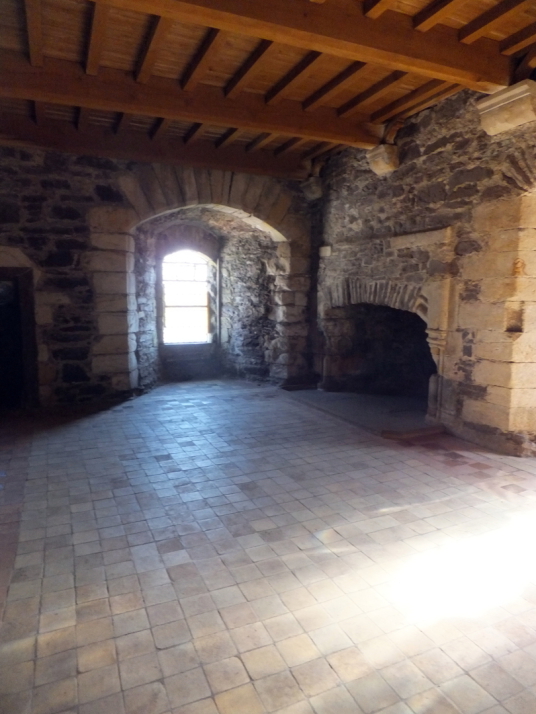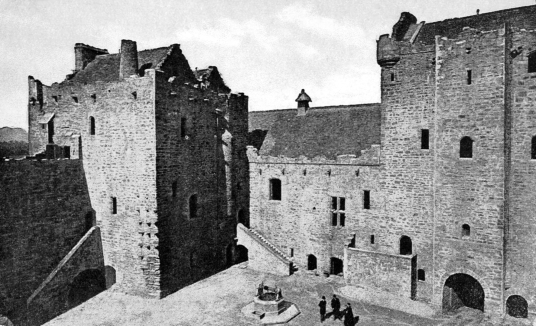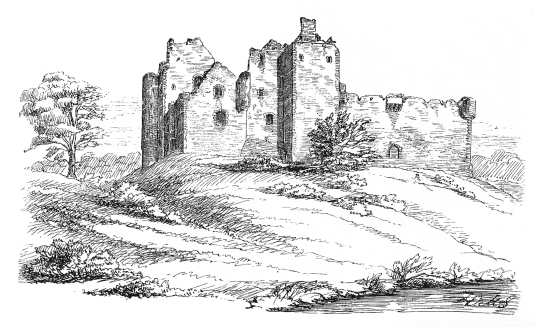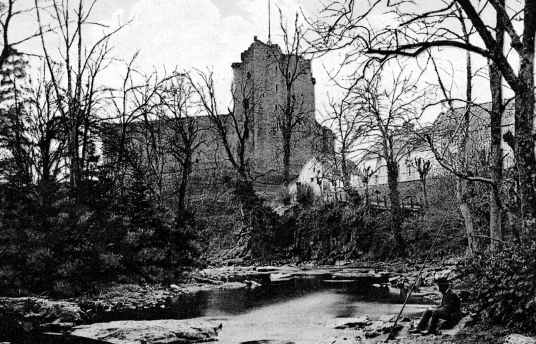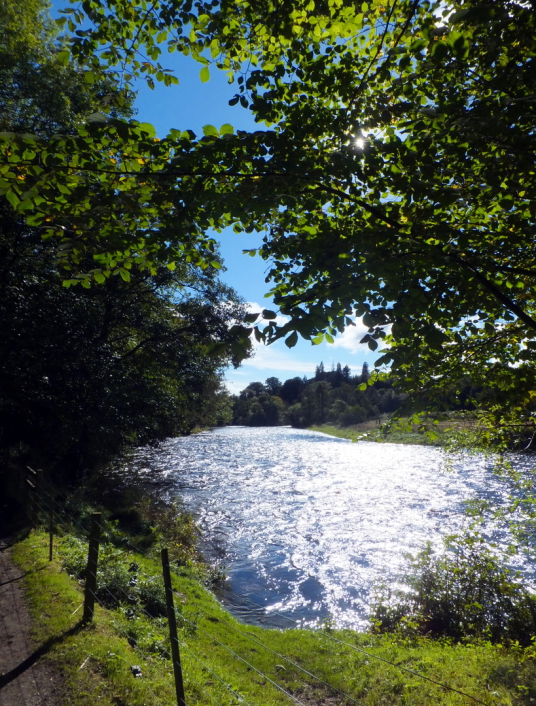Doune Castle
Doune Castle, a magnificent medieval castle in a pretty spot by the River Teith, built by Robert Stewart, Duke of Albany, near Doune in Stirlingshire, and used as Castle Leoch in the TV series Outlander.
Stirling: About 0.25 miles south-east of Doune, on minor road south of the A820, just north of where the River Teith and the Ardoch Burn meet, at Doune Castle.
HES NN 728011 OS: 57 FK16 6E
OPEN: Open all year: open Apr-Sep, daily 9.30-17.30; Oct-Mar, daily 10.00-16.00; closed 25/26 Dec and 1/2 Jan; last ticket 30 mins before closing. Shop. WC nearby. Exhibition and audio tour
narrated by Monty Python's Terry Jones. Weddings.
Tel: 01786 841742 Web: www.historicenvironment.scot
Standing on a strong site in a lovely location above the River Teith, Doune Castle, built in the 14th century, consists of two strong towers linked by a lower range. These buildings form two sides of a courtyard, the other sides enclosed by a high curtain wall. Other ranges were planned to surround the whole courtyard, but were apparently never built. The curtain wall has open rounds at the corners, and corbelled-out semi-circular bartizans midway between the rounds. This was once a lordly residence and remains an impressive old stronghold, probably on the site of an older castle.
The larger gatehouse, or lord’s tower, with the arched entrance or pend to the castle through the basement, is rectangular in plan, with a semi-circular tower projecting at one corner. It rises to five storeys and a gabled garret within a flush parapet. There are fine views from the top of the tower.
The smaller, or kitchen, tower rises to four storeys and a gabled garret, also within a flush parapet.
The lord’s tower has vaulted cellars, in the basement, and a fine vaulted hall on the first floor, reached by an external stone stair from the courtyard. The hall has a magnificent double fireplace and a minstrels' gallery as well as a carved oak screen. A stair, in the thickness of the walls, climbs to the storeys above, which contain many chambers, including the great chamber or upper hall on the second floor, which has been a magnificent room.
The joining range contains the great hall, and was also originally reached by a separate outside stair. This chamber has a magnificent roof and was also once a very grand chamber.
The kitchen tower houses the kitchen on the first floor and has an enormous arched fireplace, an oven and drains with hatches through to an antechamber, and above this were more private chambers, a suite of which was used by Mary, Queen of Scots.
A wall with a wallwalk and corbelled out bartizans and a turret completes the other sides of the courtyard, the wall opposite the entrance pierced by a series of windows. There may have been a further range of buildings against the courtyard walls, but it is not clear if these were ever built or if they were completely demolished.
The castle was built by Robert Stewart, Duke of Albany, after he married Margaret Graham, Countess of Menteith, in 1361 and he built a residence to reflect his importance. Stewart virtually ruled Scotland during the reign of Robert III and the imprisonment in England of the young James and he may have had a hand in the cpature of the young king. Albany became Governor and Guardian of Scotland.
When Albany died in 1420, his son, Murdoch, succeeded him as Regent and as Duke, but when James I was freed from England in 1424 and became ruler in his own right, he had Murdoch executed after imprisoning him in Caerlaverock Castle and then took Doune and made it a royal property.
Doune was kept as a royal hunting lodge, prison, and dower house for the widows of James III, James IV and James V. It was occasionally used by Mary, Queen of Scots, and was held by forces loyal to her until 1570. This is another castle where a ghostly apparition of Mary has been reported.
The property passed to the Earls of Moray, and the Stuart Earls list their seat at Doune Park and also own Darnaway Castle in Moray, also having held Castle Stuart.
Doune was occupied by the Marquis of Montrose in 1645, and by Government troops during the Jacobite Risings of 1689 and 1715. It was taken by Jacobites in 1745, and used as a prison, although many of the prisoners escaped. It was restored in the late 19th century by the then Earl of Moray, although the ‘mortar’ used has subsequently all had to be removed.
The castle was used as a location for Monty Python and the Holy Grail, the 1997 film Ivanhoe, and more recently as Winterfell in Game of Thrones and in the TV series Outlander, where it is Castle Leoch, in the book the home of Clan Mackenzie. The castle was also used as a location in the Netflix movie Outlaw King, about Robert the Bruce.
The ballad ‘The Bonnie Earl o’ Murray’ tells the tale of the murder of the Earl of Moray, at Donibristle, by the Gordon Earl of Huntly during a
feud, and has the last verse:
‘O lang will his Lady.
Look owre the Castle Doune.
Ere she see the Earl o’ Moray
Come sounding through the toun.’
There is a pleasant walk along the banks of the River Teith and to the village of Doune.



